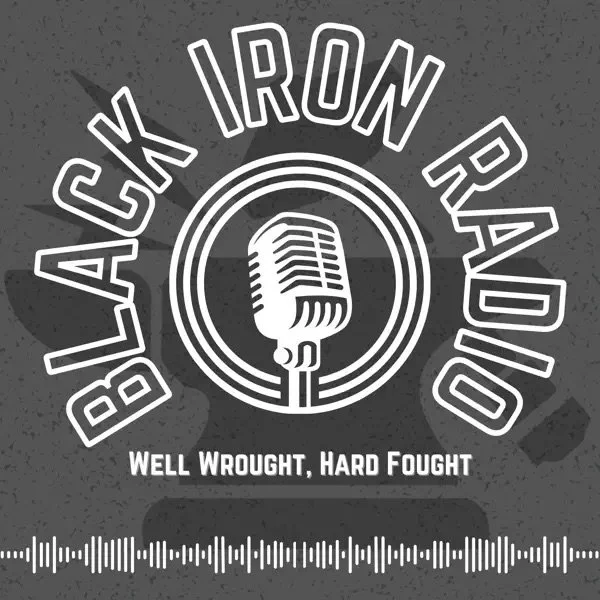So You Want to Maximize Recovery Days
In this blog post, we’re diving into key takeaways from our latest podcast episode on maximizing recovery. We break down the conversation with actionable strategies to help you optimize rest days, balance active recovery with full rest, and fuel your body for better performance. If this resonates with you, be sure to check out the full episode for an even more in-depth discussion!
BLACK IRON RADIO EP. 226: SO YOU WANT TO MAXIMIZE RECOVERY DAYS
Brooke, Christin, and Maggie dive into everything you need to know about optimizing rest days, balancing active recovery with full rest, and fueling your body for better performance. They break down common recovery mistakes, the role of sleep and stress management, and how listening to your body can help you make long-term progress. Whether you’re training hard or just looking to feel your best, this episode will help you fine-tune your recovery strategy.
📲 Listen & Subscribe: Apple Podcasts | Spotify
Why Recovery Matters
Recovery days are just as important as training days. Yet, many athletes and fitness enthusiasts struggle to take full advantage of them. Recovery isn’t about being lazy—it’s about allowing your body to adapt, rebuild, and come back stronger.
In this post, we’ll break down why recovery is essential, how to optimize it, and how to balance active recovery with full rest days.
The Science of Recovery
Training breaks down muscle tissue. Recovery is when those tissues repair and grow stronger. It’s also when the central nervous system (CNS) gets a chance to reset, reducing the risk of burnout and injury. If you skip recovery, you risk stalling progress or even backsliding due to overtraining.
Key benefits of recovery days:
Muscle repair and growth
CNS recovery to prevent burnout
Reduced risk of injury
Improved mental resilience and motivation
Common Recovery Mistakes
Fear of Losing Progress
Many believe taking a day off means losing fitness. In reality, recovery allows you to make long-term gains by preventing fatigue and overuse injuries.
Not Differentiating Between Active and Passive Recovery
Active recovery involves low-intensity movement, like walking or yoga. Passive recovery is full rest, crucial for CNS reset. Both are important and should be included in a balanced plan.
Under-Fueling on Rest Days
Just because you aren’t training doesn’t mean you should reduce calories drastically. Your body still needs nutrients for recovery and muscle repair.
Ignoring Sleep and Stress Management
Poor sleep and unmanaged stress hinder recovery. Sleep is when most muscle repair happens, and chronic stress can increase inflammation, delaying progress.
Active Recovery vs. Full Rest Days
Understanding when to engage in active recovery versus full rest is key to optimizing performance.
Active Recovery:
Low-intensity activities (walking, swimming, yoga, light cycling)
Promotes blood flow and reduces muscle stiffness
Helps maintain movement without overloading the CNS
Full Rest Days:
No structured physical activity
Essential for CNS and joint recovery
Improves long-term resilience and prevents burnout
How Nutrition Supports Recovery
Nutrition plays a major role in how well your body recovers. On recovery days, focus on:
Protein for Muscle Repair
Aim for at least 1g per pound of body weight
Carbs to Replenish Glycogen
Moderate intake ensures energy stores are restored for your next session
Healthy Fats to Reduce Inflammation
Omega-3s from sources like salmon, flaxseeds, and walnuts
Hydration
Water and electrolytes help maintain proper muscle function
The Role of Sleep in Recovery
Sleep is one of the most underrated components of recovery. During deep sleep, the body releases human growth hormone (HGH), crucial for muscle repair and overall recovery.
How to Improve Sleep Quality:
Set a consistent bedtime
Avoid screens an hour before bed
Keep your bedroom cool and dark
Use relaxation techniques like deep breathing or meditation
Stress Management for Optimal Recovery
Stress is another factor that can hinder progress. High stress levels increase cortisol, a hormone that can delay recovery and impact performance.
Ways to Manage Stress on Recovery Days:
Journaling to reflect on your week
Light stretching or foam rolling
Practicing mindfulness or deep breathing
Engaging in hobbies unrelated to training
How Many Recovery Days Do You Need?
The number of recovery days depends on factors like training intensity, age, and experience level. While there’s no magic number, general guidelines suggest:
Beginners: 2-3 recovery days per week
Intermediate/Advanced: 1-2 full rest days, plus active recovery as needed
High-Volume Athletes: Periodization of deload weeks and structured recovery
Listening to your body is key—if you’re consistently fatigued, sore, or underperforming, you likely need more rest.
Optimizing Recovery Days
To make the most of your recovery days, prioritize:
Hydration and Nutrition
Quality Sleep and Stress Management
Balanced Active and Passive Recovery
Bodywork, Massage, and Mobility Work (if available)
Recovery isn’t a setback—it’s a tool for long-term success. Whether you’re training for performance or general health, learning to maximize recovery days will make you stronger, more resilient, and less prone to injury.
Are you prioritizing your recovery days? Let us know your go-to recovery strategies in the comments!
🎙️ WANT MORE? SUBSCRIBE TO BLACK IRON RADIO!
If you enjoyed this conversation, check out more episodes of Black Iron Radio, where we cut through the noise and give you real, no-BS advice on feeling, performing, and looking your best. Each week we share practical nutrition, training, and wellness strategies and tips to help you succeed.
📲 Listen & Subscribe: Apple Podcasts | Spotify


